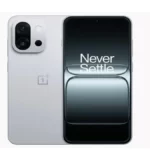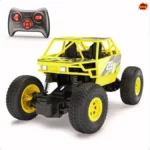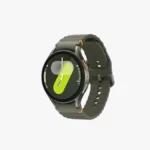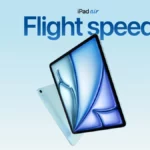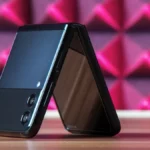Virtually any camera may be used as a valuable instrument for vlogging, and many top camera phones will also perform admirably in this regard. But if you want to advance your YouTube, Instagram, or TikTok career, you’ll need a tool made specifically for the task. These cameras not only make it simple for you to record a new video for your vlog and provide fantastic image quality, a superb screen, reliable autofocus, and incredible image stabilization. The best affordable camera for vlogging is listed here, covering a range of price ranges, feature sets, and skill levels.
You’ll get that here: each device on our list provides vlogging-friendly functionalities you won’t automatically find elsewhere, such as image stabilization for incredibly smooth footage, flip-out screens that make it simpler to take your photos and videos, color grading and other sophisticated video tools, or enhanced audio-capture capabilities. Naturally, each of these best cameras for vlogging can also shoot still images if and when necessary. We examined the advantages and disadvantages of each entry after testing models to meet every price range, including some of the finest entry-level cameras and the best mirrorless cameras. In the list below, we’ve reviewed and ranked the best budget cameras for vlogging to aid in your decision-making. We’ve also included some advice on things to think about before making a purchase.
What Qualities Should a Vlogging Camera have?
What to look for in a vlogging camera? The answer is here. Filmmakers who frequently work alone and use a tripod, gimbal, automount, or simply their arms to hold a camera are the target audience for vlogging cameras. Besides recording, it should also be suitable to support your story.
The most crucial necessity is a screen that can turn across so that you can view yourself while filming. Flipping it out to the side prevents obstruction from tripods or microphones when it is turned up, down, or to the side. Continuous autofocus (AF) with face and eye detection is also necessary for video. While you pay attention to your subject, it maintains focus for your camera. Nowadays, most cameras can do that, although some are better than others. If you need help determining where to buy vlogging camera, you can purchase this camera online or else store also.
Another essential component for video quality is 4K recording. Most modern cameras can record 4K video at a frame rate of at least 24 fps, but 60 or 120 fps is preferable. If you plan to record slow motion for sports or other activities with quick acceleration, opt for a model with at least 1080p at 120 frames per second.
Skin tones are another essential factor to consider in video quality. A log pattern helps enhance dynamic range in extremely bright or dark filming settings, and good light responsiveness is helpful for nighttime shooting, concerts, etc. Get a camera that can capture 4K with 10 bits of colors if you want the finest image quality and can afford it. That will increase your alternatives.
In 2023 Best Affordable Camera for Vlogging
So, what are the best cameras for vlogging? To help you find the best affordable cameras for vlogging option for you, our knowledgeable reviewers evaluate and compare goods and services for hours. Learn more about the testing process.
-
Sony ZV-1
The Sony ZV-1, both small and powerful, is our pick for the best little vlogging cameras for beginners. Along with its utterly flexible display, microphone port, and small packaging, it provides excellent adaptability. In tests, we discovered that its genuine tracking and Eye AF were top-of-the-line, and the 1-inch sensor captured clear accurate 4K/30p video.
The ZV-1 provides an incredible amount of depth for a small camera, with a constructed ND filter and settings like S-Log2 for people who want to explore color editing, as our review also revealed. Although the more recent Sony ZV-1F costs less and has a wider 20mm lens and mobile phone UI, its outdated contrast AF technology and cold shoe mount prevent it from unseating the first model from the leading position. There is no better vlogging camera available than the ZV-1, which Sony is still selling.
-
DJI Pocket 2
We were great fans of the first DJI Osmo Pocket, but its follow-up addresses many of its flaws and elevates it to the top compact option for lone videographers. Although the Sony ZV-1 offers superior video quality overall, the Pocket 2’s three-axis gimbal and reliable face-tracking may make it more enticing if you frequently record walk-and-talk style clips to the camera.
We were great fans of the first DJI Osmo Pocket, but its follow-up addresses many of its flaws and elevates it to the top compact option for lone videographers. Although the Sony ZV-1 offers superior video quality overall, the Pocket 2’s three-axis gimbal and reliable face-tracking may make it more enticing if you frequently record walk-and-talk style clips to the camera.
The DJI Pocket 2 offers a new larger detector, a clearer lens, enhanced microphones, and a wide-ranging field of vision, especially in contrast to the Osmo Pocket. This implies you no longer need to hold the camera out at arm’s distance once speaking into it.
-
GoPro Hero10 Black
The newest GoPro is a significant upgrade, even though it may not appear more clearly distinct from the device it replaces. The improvements to the GoPro Hero10 Black are primarily internal and consist of a better CPU that enables video recording at resolutions up to 5.3K/60 fps, as well as 2K video at 240 fps and 4K video at 120 fps.
Additionally, it includes an improved image stabilization system that still functions when angled by up to 45 degrees and a larger 23-megapixel picture sensor. The latter is especially significant for content creators who frequently shoot on location because it enables silky-smooth video in various circumstances.
Although the sound quality isn’t as fantastic as it could be, the trio of built-in microphones are adequate, allowing you to easily add an external microphone or a GoPro Media Mod adapter. For action-oriented YouTubers, it remains the apparent and ideal option.
-
Panasonic Lumix GH6
Another of our favorite cameras for vloggers was the second-generation Panasonic GH5, which provided lots of creative flexibility in a small package. The GH6 outperforms it in almost every category with its crisper 25.2MP Micro Four Thirds sensor and ability to record 5.7K video at 60 frames per second. Additionally, it provides a vast array of codecs, frame rates, and qualities, including a bigger selection of 10-bit options, while forced-fan cooling allows for indefinite durations.
Although slightly bigger than the GH5 Mark II, it nevertheless has a form factor that is still reasonably portable. Its sturdy construction is enhanced with well-known controls and innovative tally lights on the front and back. A new video recording option on the front now simplifies the process for vloggers to record videos, and the 3-inch rear touchscreen can rotate, twist, and tilt.
Even though the GH6 lacks the live-streaming functionality of the GH5 Mark II, connectivity possibilities are plentiful. Even if comparison autofocus accuracy appears to have increased since the GH5 Mark II, there is still no pixel CMOS AF. A new algorithm has also improved stabilization, making the GH6 one of the top options for naturally reducing movements.
-
Fujifilm X-S10
The Fujifilm X-S10 is a fantastic option for vloggers thanks to its superb video quality, five-axis in-body picture stabilization, and complete display LCD.
The IBIS offers up to 6 units of stabilization. Thus the X-S10 aids in maintaining camera steadiness when recording stroll clips. The video’s quality and appearance can be modified using a variety of choices, including Fuji’s well-known film emulation modes.
-
Sony ZV-E10
Are you looking for a smaller, better vlogging camera like the Sony ZV-1? Your best choice is the ZV-E10. It’s based on the somewhat outdated Sony A6100 hardware. It has several video-focused capabilities that make it an excellent competitor.
It’s both fortunate and unfortunate that the ZV-E10 utilizes the same 24.2MP APS-C CMOS sensor as many of its A6000-series closest rivals. Compared to competitors with smaller sensors, it has a larger sensor that delivers exceptional video and photo quality for the money, especially in low light. However, when you pan rapidly, it can experience maximum delay issues, and the camera doesn’t have a viewfinder, a 4K/60p setting, or in-body image stabilization.
Which Vlogging Camera Should You Buy?
Like every other camera search, it’s critical to consider how you’ll utilize the item. Size, weight, and image stabilization are crucial if you intend to shoot a lot of run-and-gun videos; however, these aspects will be less crucial for vloggers who intend to set the tripod with the camera in their studio. We have mentioned a variety of cameras that are suitable for vlogging. You can choose the best affordable camera for vlogging that is right for you by considering the budget, the portability, and the type of vlog you need to record.





